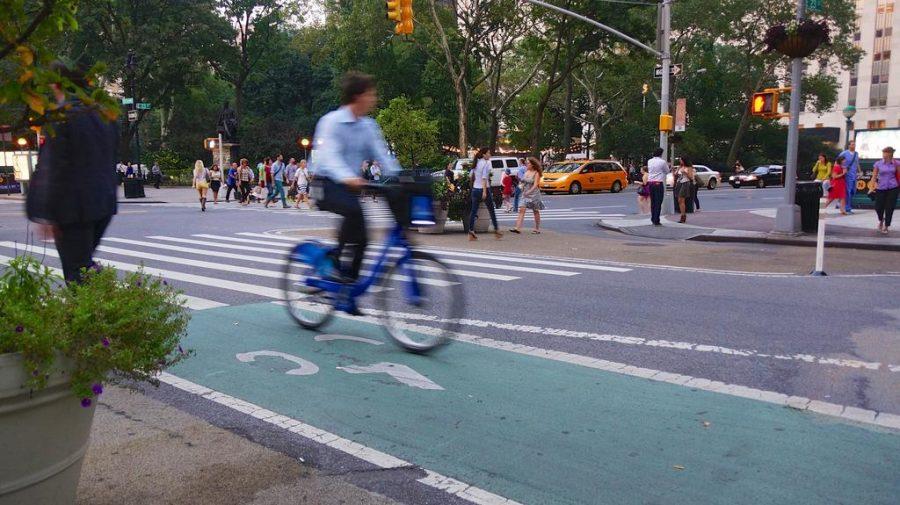On Saturday, 87-year-old Yevgeny Meskin was struck by a minivan and killed while riding his bike on Ocean Parkway in Brooklyn. He’s the 26th cyclist to be killed on the road in New York City this year, a number that is higher than it has been in two decades.
Five days before Meskin was killed, the New York City Council passed a $1.7 billion plan to improve the way that New Yorkers use transportation in the city. The plan, spearheaded by City Council Speaker Corey Johnson, will require the city to build 250 miles of protected bike lanes. Along with bike lanes, the plan will also require the city to build 150 miles of dedicated bus lanes and one million square feet of new pedestrian space, along with new signaling technology and accessibility upgrades.
Although the plan to add bike lanes is a step in the direction of safety, it isn’t set to be finalized until December 2021, and the 250 miles are scheduled to be complete in 2026. In the meantime, NYU students will still be biking to class without the security of bike lanes on every street.
CAS junior Jacob Carrasco rides his bike to and from campus every day and is passionate about the benefits of cycling. However, he recognizes the importance of bike safety, especially after experiencing many near-accidents. He makes sure to practice swerving, and always takes care of his brakes to ensure that they are fully functional, among other safety measures.
“These stories really sober me and make me think of how important it is that I always wear my helmet, that I don’t risk as many red lights, that I don’t wear my AirPods,” Carrasco said. “I will continue to bike after hearing about the increased deaths, but each one to me is a sobering reminder of my fragile place on the road.”
CAS senior Adam Salisbury chooses to ride his bike often because it is less expensive than taking a taxi or Uber and quicker than public transportation. Salisbury feels that protected bike lanes provide safety for bikers, while streets without bike lanes expose cyclists to unsafe situations.
“I sometimes feel a little in danger depending on if there are bike lanes or not,” Salisbury said. “When there are bike lanes it’s a lot more comforting.”
CAS sophomore Sebastion Kipp, who bikes to campus from Lafayette Street Residence Hall every day, said bike lanes do not guarantee safety in his mind.
“I think adding more protective bike lanes will be good,” Kipp said. “[It will mean] not having to deal with traffic, because even though there are bike lanes, not many people respect them.”
New York is also working to bring down traffic-related deaths and injuries with the Vision Zero initiative, which Mayor Bill de Blasio introduced in 2014. The goal of the initiative is to eliminate these types of accidents, which the plan says will be achieved through stronger enforcement of traffic laws and new, safer street designs.
Since the initiative was adopted in 2014, the number of pedestrian and motor vehicle deaths has decreased. However, the same can’t be said for cyclists, for whom the number of deaths has increased from 10 in 2018 to 26 so far in 2019.
Due to these harrowing statistics, some students, such as CAS sophomore Pinky Mancuso, refuse to bike due to the risk of injury or death.
“I’m terrified of getting hit by a car as a biker,” Mancuso said. “I know that it happens a lot. I would be traumatized if I even saw someone get hit.”
Email Julia Baxley at [email protected].

























































































































































